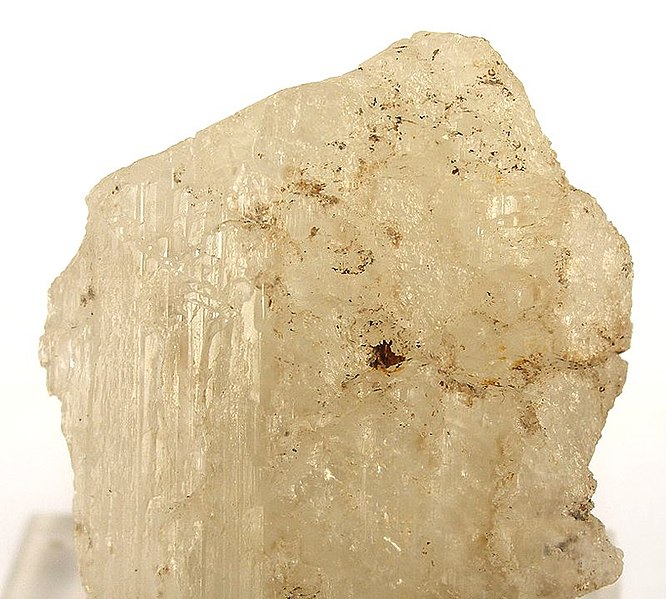 |
| It is easy to see how amblygonite is often mistaken for other minerals this specimen mimics milky quartz Photo by Ra'ike |
As a mineral amblygonite
is classified as a fluorophosphate
with a chemical formula of (Li, Na)AlPO4(F, OH) that is composed of
sodium, lithium, aluminum, phosphate, fluoride and hydroxide. This is a mineral
occurs in pegmatite
deposits were this easily mistaken for albite or other feldspars. It is readily
distinguished by its density, cleavage and flame
test for lithium. Amblygonite forms a solid
solution series with montebrasite
that is the low fluorine member of the series.
 |
| Faceted amblygonite from Brazil. Photo by Ra'ike |
This is a mineral found in LCT
type pegmatites, high-temperature tin veins and greisens where it is found
with spodumene, apatite, lepidolite, tourmaline and other lithium bearing
minerals. It is often been used as an ore of lithium The chief commercial
sources have been the deposits in California France
 |
| A single crystal of faceting grade amblygonite. Photo by Rob Lavinsky |
The mineral amblygonite was originally discovered in Saxony,
Germany by August
Breithaupt in 1817 and named by him from the Greek words amblus (blunt) and
gouia (blunt) because there is an obtuse angle between its cleavages. Later the same mineral was found at Montebras ,
France Hebron ,
Maine San Diego County , California
 |
| Amblygonite variety Montebrasite Photo by Rob Lavinsky |
When its transparent amblygonite is faceted into gemstones
where it is set into jewelry, however because it is prone to breakage and
abrasion as well as displaying hardness problems as well as toughness it is
rarely mounted into jewelry. This stone
when it is cut often finds its way into collections as unmounted stones. The
principle sources of this gemstone are Brazil United States Australia France Germany Namibia Norway Spain
Making gems out of this one is new to me, John. Interesting mineral!
ReplyDeleteThis is very unique information
ReplyDeleteRegards
Gemological